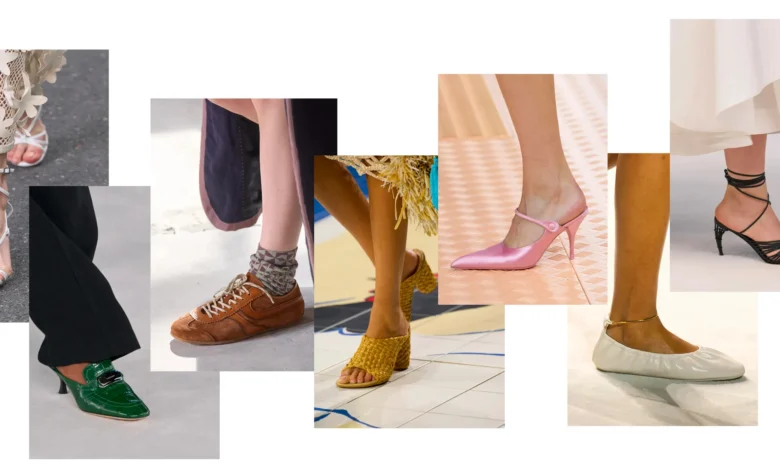Step Up Your Style: The Evolution of Iconic Footwear Trends

Early Beginnings
The evolution of iconic footwear trends, particularly sneakers, reflects a significant cultural shift from functional athletic gear to essential fashion statements. This transformation can be traced through various historical milestones and societal changes. Sneakers originated in the late 19th and early 20th centuries as simple athletic footwear designed for comfort and performance. The earliest models featured a canvas upper and rubber sole, allowing for better grip and flexibility during sports. The term “sneaker” itself highlights their quiet movement compared to traditional leather shoes, marking a shift towards more casual and functional footwear. The introduction of the Keds brand in 1916 and Converse’s Chuck Taylor All-Stars in 1917 set the stage for what would become a footwear revolution, as these shoes gained popularity among athletes and the general public alike.
The Rise of Sneaker Culture
The 1980s marked a pivotal moment in sneaker history, driven by the popularity of basketball and hip-hop culture. The launch of the Air Jordan in 1985 revolutionized athletic footwear and established sneakers as cultural icons. Michael Jordan’s partnership with Nike created a marketing phenomenon that transcended sports, turning his signature shoe into a must-have item for fans and fashion enthusiasts. This era saw sneakers embraced by celebrities and musicians, solidifying their status as symbols of style and self-expression. With the introduction of the Nike promo code, consumers gained even more access to these coveted styles, making it easier to join the sneaker culture that was rapidly evolving during this time.
Key Influences
- Basketball Boom: Athletes like Michael Jordan transformed sneakers into fashion statements, blending performance with style. The emergence of signature athlete lines, such as the Nike Air Max and Reebok Pump, catered to a growing audience eager to emulate their sports heroes.
- Hip-Hop Influence: The hip-hop community adopted sneakers as a form of rebellion and status, with brands like Adidas becoming synonymous with the genre. Artists like Run-D.M.C. famously endorsed the Adidas Superstar, leading to a cultural phenomenon where sneakers became integral to hip-hop fashion and identity.
- Streetwear Integration: As streetwear gained traction in the 1990s and early 2000s, sneakers became central to casual fashion, leading to limited-edition releases and collaborations with high-end designers. Brands like Supreme and Off-White began to merge street culture with luxury, creating a new market for exclusive sneaker drops that fans eagerly awaited.
Sneakers in High Fashion
By the 2000s, luxury fashion houses began incorporating sneakers into their collections, bridging the gap between high fashion and street style. Designers like Alexander McQueen and Balenciaga introduced sneakers made from premium materials, further legitimizing their place in the fashion hierarchy. This trend reflects a broader societal shift towards comfort and practicality in fashion, where sneakers can be worn in both casual and formal settings. The rise of “athleisure” as a fashion category allowed sneakers to be paired with everything from tailored suits to evening wear, showcasing their versatility.
Contemporary Trends
Today, sneakers are not merely athletic footwear but a canvas for personal expression and creativity. The rise of sneaker customization allows individuals to showcase their unique styles, with platforms like Nike By You enabling consumers to design their shoes. Furthermore, limited-edition releases create a sense of exclusivity and desirability, fueling a thriving resale market where rare pairs can fetch thousands of dollars.
Sustainability and Innovation
The sneaker industry increasingly focuses on sustainability, with brands using recycled materials and ethical manufacturing practices. Companies like Allbirds and Veja lead the charge, emphasizing eco-friendly production methods that appeal to environmentally-conscious consumers. Innovations in technology, such as 3D printing and smart textiles, are also shaping the future of footwear, promising enhanced performance and personalization.
Cultural Impact
Sneakers have become a symbol of belonging within communities, particularly among sneaker enthusiasts who share their collections and experiences online. Social media platforms like Instagram and TikTok have amplified sneaker culture, allowing fans to connect, trade, and showcase their latest finds. This cultural phenomenon underscores the significance of sneakers in contemporary fashion and society, reflecting broader trends of individuality and self-expression.
The Sneaker Resale Market
The rise of the sneaker resale market has added a new dimension to the footwear industry. Platforms have created a thriving ecosystem where collectors and enthusiasts can buy, sell, and trade rare and limited-edition sneakers. This market has introduced a new level of exclusivity and desirability, with specific sneakers becoming valuable assets that appreciate over time. The resale market has also influenced how brands approach product releases, with many opting for limited quantities to create scarcity and drive up demand.
The Future of Sneaker Culture
As we look to the future, it’s clear that sneaker culture will continue to evolve, adapting to new trends and challenges while remaining an essential part of our wardrobes. Sustainability and innovation will be crucial in shaping the industry, with brands focusing on eco-friendly materials and cutting-edge technologies. The democratization of sneaker culture through social media and customization platforms will also continue to shape how we engage with footwear. As sneakers become more accessible and personalized, they will remain a powerful tool for self-expression and community building, cementing their place as an enduring icon of fashion and culture.
Conclusion
In summary, the evolution of iconic footwear trends, especially sneakers, illustrates a fascinating journey from functional athletic gear to a cornerstone of modern fashion. Shaped by cultural movements, technological advancements, and changing societal values, sneakers have transcended their original purpose, becoming powerful symbols of identity, creativity, and community. As we look to the future, it’s clear that sneakers will continue to evolve, adapting to new trends and challenges while remaining an essential part of our wardrobes.
Key Takeaways
Cultural Significance: Sneakers have evolved from functional athletic gear to essential fashion items, reflecting broader cultural movements and societal changes.
Influence of Athletes and Celebrities: The rise of sneaker culture has been significantly influenced by athletes and celebrities who have turned sneakers into status symbols.
Integration with High Fashion: Luxury brands have embraced sneakers, merging high fashion with street style, making them versatile for various occasions.
Sustainability Focus: The sneaker industry increasingly prioritizes sustainability, with brands exploring eco-friendly materials and ethical manufacturing practices.
Resale Market Dynamics: The sneaker resale market has created a new layer of exclusivity and value, influencing how brands approach product releases and consumer engagement.
Future Trends: Innovations in technology and a focus on customization will continue to shape the future of sneaker culture, emphasizing individuality and community.


